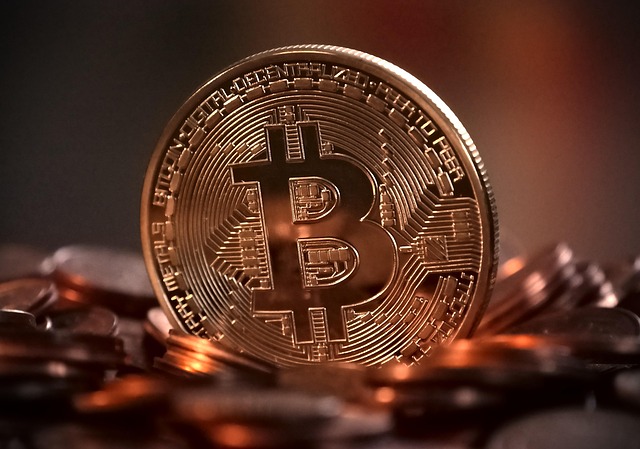XRP ETF: Here are the funds awaiting SEC approval so far
American asset manager Franklin Templeton has entered the growing XRP exchange-traded fund (ETF) race, becoming the latest firm to file for a spot XRP ETF in the United States.Franklin Templeton’s XRP (XRP) ETF is designed to track the performance of the XRP price, with XRP holdings stored at Coinbase Custody Trust, according to an official filing with the US Securities and Exchange Commission on March 11.On the same day, the SEC postponed decisions on multiple crypto ETF filings, including Grayscale’s proposal to convert its XRP Trust into an ETF.Despite the growing XRP ETF filing frenzy, BlackRock — the issuer of the largest spot Bitcoin (BTC) ETF — has yet to submit a filing for an XRP-based product.Who has filed for an XRP ETF in the US?As of March 12, nine companies filed for XRP ETF products in the US, including major issuers like Bitwise, ProShares, 21Shares and others.Bitwise, one of the world’s largest crypto funds managers, was the first firm to submit a Form S-1 filing for an XRP ETF on Oct. 2, 2024.Canary Capital subsequently followed Bitwise’s lead, filing a Form S-1 for a similar product on Oct. 8, 2024.Switzerland-based crypto investment firm 21Shares and the US ETF provider WisdomTree also filed for XRP ETFs in late 2024, with filings coming in November and December, respectively.Asset manager ProShares joined the XRP ETF race in 2025 by filing for several XRP ETF products with the SEC on Jan. 17, including the ProShares XRP ETF and three additional XRP investment products.Related: VanEck registers Avalanche ETF in US as AVAX drops 55% year-to-dateAnother XRP ETF filing subsequently came from the European crypto investment firm CoinShares in January, with Grayscale proposing to convert its XRP Trust into an XRP ETF trading on the New York Stock Exchange on Jan. 30.Volatility Shares, a Florida-based financial services firm founded in 2019, also filed three XRP ETF products on March 7, including the Volatility Shares XRP ETF, the Volatility Shares 2x XRP ETF and the Volatility Shares -1x XRP ETF.Other filings featuring XRP ETFsBeyond dedicated XRP ETF filings, at least two asset managers have included XRP in broader crypto ETF products.On Jan. 21, asset manager REX-Osprey filed for an “ETF Opportunities Trust,” which includes seven ETFs tracking assets including major coins such as XRP and Bitcoin, as well as memecoins like Bonk (BONK) and Official Trump (TRUMP).Similarly, Tuttle Capital Management submitted an ETF opportunities trust filing, including 10 daily target ETFs, covering assets such as XRP and Melania (MELANIA).ETF compositions in the ETF opportunities trusts by Tuttle Capital Management and REX-Osprey. Source: SECApart from BlackRock, a number of crypto ETF providers have not yet filed for an XRP ETF, including firms such as Invesco, VanEck, ARK Invest, Fidelity Investments and Galaxy Digital.Magazine: SEC’s U-turn on crypto leaves key questions unanswered
Web3 gaming investors no longer throwing money at ‘Axie killers’
The Web3 gaming industry is facing tighter investment conditions as capital flows become more selective, with investors prioritizing sustainable projects over hype-driven fundraising.In February, Gunzilla Games Web3 director Theodore Agranat described blockchain gaming as a “game of musical chairs” in which the same capital cycles through different projects and “no new money” comes in. The executive also said users go from project to project to extract value. After that, they leave and search for the next project.In the same month, the much-anticipated Web3 game Illuvium announced a 40% layoff, demonstrating the need for teams to go “super lean” in today’s market. Sky Mavis co-founder and CEO Trung Nguyen announced a similar move in October 2024, cutting 21% of its staff to optimize its budget for upcoming projects. Despite these events, Web3 gaming professionals said that capital still exists, and explained some of the factors contributing to the industry-wide trend. Investors no longer blindly throw their money at projectsSky Mavis co-founder Jeffrey Zirlin told Cointelegraph that Web3 gaming is not uniquely struggling but rather experiencing the same capital constraints affecting the broader crypto industry.The executive said Web3 gaming is not facing a unique challenge as the landscape is “tight across the board.” Still, Zirlin pointed out exceptions. He cited Fableborne, a mobile Web3 game that was oversubscribed by 16,000% despite the market downturn, as demonstrating that “fresh capital was indeed flowing into Ronin,” the Sky Mavis blockchain network. He added: “It’s not that investment has dried up entirely. It’s just that investors are no longer blindly throwing money at projects like they did with so-called ‘Axie killers’ that failed to deliver.”“Axie killers” was a term used to describe gaming projects that claimed to be the next big Web3 game that would surpass Axie Infinity, Sky Mavis’ flagship Web3 game. Meanwhile, The Sandbox co-founder and chief operating officer Sebastien Borget told Cointelegraph that the “game of musical chairs” description suggests a degree of randomness. Borget said he disagrees with this. The executive said that while new capital is more limited and investors are more cautious, there is now less of the unpredictability previously fueled by hype cycles. “The success of blockchain games increasingly depends on the ability to meet traditional gaming metrics. These include delivering compelling content and gameplay, fostering sustainable user acquisition, establishing a strong in-app economy and building a loyal user base,” he added. Related: Axie Infinity teases new Web3 game as NFT outlook turns positiveProjects can’t just “slap NFTs” into a game and raise millionsJosh Gier, chief marketing officer of the gaming tournaments platform Coliseum, told Cointelegraph that the days of simply adding non-fungible tokens (NFTs) to a game and earning massive support from crypto investors are gone. “Yes, the speculative phase of blockchain gaming, where projects could raise millions just by slapping NFTs onto a game, has cooled off. But that doesn’t mean capital has disappeared,” Gier said. The executive said the capital is becoming more selective and flows toward projects with strong fundamentals and sustainable economies.“Investors are showing interest in games that integrate Web3 elements in a way that enhances the player experience rather than focusing solely on financial incentives,” Gier added. Vineet Budki, the CEO of venture firm Sigma Capital, said some core investors, like Animoca Brands, specifically focus on the blockchain gaming segment. He said that games take longer to build, unlike other niches, so gaming investments take longer to bear fruit. Still, the executive said, raising Web3 gaming capital has become more complicated. “Gone are the times when you would make a video on gameplay, have attractive tokenomics and raise capital,” Budki said in a statement sent to Cointelegraph. The executive said that teams building great games and having knowledge of the distribution process are the elements that can attract capital. Magazine: Off The Grid’s ‘biggest update yet,’ Rumble Kong League review: Web3 Gamer
Bitcoin dips below $80K as Trump Canada tariffs halt BTC price comeback
Bitcoin, the world’s first and most popular cryptocurrency, has been experiencing a rollercoaster ride in the past few days. After a 7% rebound on March 11, the digital currency cooled down as familiar headwinds sparked market jitters. This dip in price was further fueled by the announcement of fresh tariffs on Canada by US President Donald Trump.
According to data from Cointelegraph Markets Pro and TradingView, Bitcoin reached a high of $82,154 on Bitstamp before consolidating. However, the news of additional tariffs caused the S&P 500 to trade down 0.5% on the day, leading to volatility in stock indexes.
This market turmoil has also affected the cryptocurrency market, with Bitcoin struggling to find a clear upside catalyst. Trading firm QCP Capital noted that Trump’s apparent “indifference to recession risks” has made it harder for risk assets, but there are still some positive signs. The weakening of the US dollar, for example, is historically a positive factor for USD-denominated risk assets like US equities and crypto.
Despite these potential silver linings, Bitcoin price analysis shows that the digital currency is at a crossroads with no clear direction. Trading channel More Crypto Online used Elliott Wave theory to identify key support and resistance levels, warning that the price could still head to new long-term lows. Popular trader CrypNuevo also noted a “great reaction” at the 50-week simple moving average, which has remained a strong support trendline since March 2023.
It’s important to note that every investment and trading move involves risk, and readers should conduct their own research before making any decisions. However, with the current market volatility and uncertainty, it’s crucial to stay informed and keep a close eye on the developments in the cryptocurrency market.
Ether risks correction to $1.8K as ETF outflows, tariff fears continue
Ether is struggling to reverse a near three-month downtrend as macroeconomic concerns and continued selling pressure from US Ether exchange-traded funds (ETFs) weigh on investor sentiment.Ether (ETH) has fallen by more than 53% since it began its downtrend on Dec. 16, 2024, after it had peaked above $4,100, TradingView data shows.The downtrend has been fueled by global uncertainty around US import tariffs triggering trade war concerns and a lack of builder activity on the Ethereum network, according to Bitfinex analysts.ETH/USD, 1-day chart, downtrend. Source: Cointelegraph/ TradingView “A lack of new projects or builders moving to ETH, primarily due to high operating fees, is likely the principal reason behind the lackluster performance of ETH. […] We believe that for ETH, $1,800 will be a strong level to watch,” the analysts told Cointelegraph. “However, the current sell-off is not being seen solely in ETH, we have seen a marketwide correction as fears over the impact of tariffs hit all risk assets,” they added.Related: Bitcoin reserve backlash signals unrealistic industry expectationsCrypto investors are also wary of an early bear market cycle that could break from the traditional four-year crypto market pattern.Bitcoin (BTC) is at risk of falling to $70,000 as cryptocurrencies and global financial markets undergo a “macro correction” while remaining in a bull market cycle, said Aurelie Barthere, principal research analyst at blockchain analytics firm Nansen.Related: Deutsche Boerse to launch Bitcoin, Ether institutional custody: ReportEther price limited by ETF outflowsAdding to Ethereum’s challenges, continued outflows from Ether ETFs are limiting the asset’s price recovery, according to Stella Zlatareva, dispatch editor at digital asset investment platform Nexo:“ETH’s 20% decline last week pushed its price below the key $2,200 trendline that had supported its bull market recovery since 2022. The modest price action may be attributed, as with Bitcoin, to ETFs.”US spot Ether ETFs have entered a fourth consecutive week of net negative outflows, after seeing over $119 million worth of cumulative outflows during the previous week, Sosovalue data shows.Total spot Ether ETF net inflow. Source: SosovalueStill, some notable institutional crypto market participants remain optimistic about Ether’s price for 2025. VanEck predicted a $6,000 cycle top for Ether’s price and a $180,000 Bitcoin price during 2025.Magazine: Ethereum L2s will be interoperable ‘within months’: Complete guide
Bitcoin $70K retracement part of ‘macro correction’ within bull market: analysts
Bitcoin’s potential retracement to $70,000 may be an organic part of the current bull market, despite crypto investor concerns of an early arrival of a bear market cycle.Bitcoin (BTC) fell more than 14% during the past week to close around $80,708 after investors were disappointed with the lack of direct federal Bitcoin investments in President Donald Trump’s March 7 executive order that outlined a plan to create a Bitcoin reserve using cryptocurrency forfeited in government criminal cases.Despite the drop in investor sentiment, cryptocurrencies and global markets remain in a “macro correction” as part of the bull market, according to Aurelie Barthere, principal research analyst at the Nansen crypto intelligence platform.BTC/USD, 1-month chart. Source: CointelegraphMost cryptocurrencies have broken key support levels, making it hard to estimate the next key price levels, the analyst told Cointelegraph, adding:“This is a macro correction (US tech will be down by 3% in the future, as discussed), so we have to monitor BTC. Next level will be $71,000 – $72,000, top of the pre-election trading range.”“We are still in a correction within a bull market: Stocks and crypto have realized and are pricing; a period of tariff uncertainty and fiscal cuts, no Fed put. Recession fears are popping up,” added the analyst.Other analysts have also warned that Bitcoin may experience a deeper retracement toward the “low $70,000’s range, which may “provide a foundation for a more sustainable recovery,” Iliya Kalchev, dispatch analyst at digital asset investment platform Nexo, told Cointelegraph.Related: Bitcoin reserve backlash signals unrealistic industry expectationsBitcoin’s 36% correction to $70,000 “normal” for a bull market: Arthur HayesBitcoin’s potential retracement to the $70,000 psychological mark would still fall within the regular price movement of a bull market, according to Arthur Hayes, co-founder of BitMEX and chief investment officer of Maelstrom.Hayes wrote in a March 11 X post:“Be fucking patient. $BTC likely bottoms around $70k. 36% correction from $110k ATH, v normal for a bull market.”Source: Arthur Hayes“Then we get Fed, PBOC, ECB, and BOJ all easing to make their country great again,” added Hayes, referring to quantitative easing, a monetary policy where central banks increase the money supply by buying government bonds and other financial assets.Related: Bitcoin may benefit from US stablecoin dominance pushQuantitative easing has historically been positive for Bitcoin price.Bitcoin’s price rose over 1,050% during the last quantitative easing period, from just $6,000 in March 2020 to $69,000 by November 2021, after the Federal Reserve’s quantitative easing policy was announced during the COVID-19 pandemic on March 23, 2020, buying over $4 trillion worth of assets such as treasuries.BTC/USD, 1-week chart, 2020-2021. Source: Cointelegraph/TradingViewAnalysts remained optimistic about Bitcoin’s price trajectory for late 2025, with price predictions ranging from $160,000 to above $180,000.Magazine: SCB tips $500K BTC, SEC delays Ether ETF options, and more: Hodler’s Digest, Feb. 23 – March 1
Trump’s Strategic Bitcoin Reserve and Digital Asset Stockpile, explained
A quick history of Trump’s statements and policies on crypto Donald Trump’s stance on cryptocurrency has shifted significantly over time. From 2019 to 2021, Trump expressed skepticism toward Bitcoin (BTC), calling it volatile and a threat to the US dollar, but by 2024, he reversed his stance, pledging support for crypto, proposing a US Strategic Bitcoin Reserve and criticizing the Biden administration’s anti-crypto policies.Early skepticism (2019–2021)July 2019: While in office, Trump tweeted that he was “not a fan” of Bitcoin, calling it “not money” and criticizing its volatility. He also opposed Facebook’s Libra (Diem) project, arguing that tech companies shouldn’t issue currency without a banking charter.June 2021: After leaving office, Trump labeled Bitcoin a “scam” and a threat to the US dollar, advocating for strict regulation to prevent it from undermining the US financial system.Crypto policy during his presidency (2017–2020)Trump’s administration generally took a cautious stance on crypto:Treasury Secretary Steven Mnuchin warned of Bitcoin’s risks and dismissed its long-term viability.The Treasury Department proposed stricter tracking rules for digital wallets, which faced industry backlash.Some Trump appointees supported crypto-friendly banking policies, but these were exceptions to an overall skeptical approach.Pro-crypto pivot in 2024Ahead of the 2024 election, Trump reversed course, pledging to end the Biden administration’s “anti-crypto” stance. He:Declared himself “very positive and open-minded” on Bitcoin.Promised to fire top crypto-skeptic regulators if reelected.Proposed a US Strategic Bitcoin Reserve, vowing to hold on to seized Bitcoin instead of auctioning it off.This dramatic shift set the foundation for Trump’s strategic Bitcoin reserve. The Strategic Bitcoin Reserve: What does it mean? One of Trump’s headline proposals is creating a Strategic Bitcoin Reserve for the US, treating Bitcoin as a national reserve asset akin to digital gold. The plan centers on stockpiling Bitcoin seized in criminal cases rather than purchasing it with taxpayer funds.Key componentsBitcoin as a reserve asset: The US government would officially recognize Bitcoin as a strategic holding, similar to gold in Fort Knox, leveraging its fixed supply and decentralized nature.Seized crypto, not taxpayer purchases: Instead of selling confiscated Bitcoin at auction (as has been past practice), the government would retain it in a central reserve account. Trump’s executive order explicitly states that any Bitcoin deposited “shall not be sold.”No immediate buying spree: The plan does not include direct federal purchases of BTC but allows for “budget-neutral” methods to expand reserves, such as using proceeds from other seized assets.Does the US already have a Bitcoin stockpile? Yes, indirectly. Over the past decade, agencies have seized large amounts of BTC but historically auctioned it off rather than holding it. Trump’s policy would change that, aiming to preserve Bitcoin as a national asset.Supporters believe this could strengthen US finances and ensure the nation isn’t left behind in a Bitcoin-driven global economy. However, critics warn of Bitcoin’s volatility and the risks of integrating a decentralized asset into government reserves. Is the Bitcoin strategic reserve the same as the digital asset stockpile? No, a digital asset stockpile is a separate reserve that would hold other forfeited cryptocurrencies.The Strategic Bitcoin Reserve focuses solely on holding Bitcoin as a reserve asset, while the Digital Asset Stockpile includes other forfeited digital assets such as Ether (ETH) or USDC (USDC), though these assets might be strategically managed or sold over time. Bitcoin, however, would be held indefinitely in the reserve.Notably, Trump’s executive order does not explicitly mention what specific crypto assets will be included in the US Digital Asset Stockpile. Here are the commonalities and differences between the Strategic Bitcoin Reserve and the US Digital Asset Stockpile: Historical context: US government and Bitcoin Trump’s Bitcoin reserve plan builds on a history of US government interactions with cryptocurrency, primarily through law enforcement and asset seizures.Seizures and auctions (Silk Road era)The government’s relationship with Bitcoin began in 2013–2014 with the Silk Road takedown, where federal agents seized 144,000 BTC — one of the largest Bitcoin hauls ever. Rather than holding the coins, the US Marshals Service auctioned them off, setting a precedent for liquidating seized crypto. Did you know? In 2014, venture capitalist Tim Draper bought 30,000 BTC for $18 million, a fraction of its later value.Accumulating and selling crypto holdingsSince then, US agencies have continued seizing and auctioning Bitcoin from various cases, selling nearly 200,000 BTC between 2014 and early 2023, netting around $366 million. However, with Bitcoin’s price surge, those sold coins would now be worth over $18 billion — raising questions about whether the government should have held onto them. Crypto advocates argue this history justifies a hodl policy rather than continued liquidation.Past administration policiesObama administration: Focused on regulating exchanges and curbing illicit use.Trump’s first term: Emphasized enforcement, sanctioning crypto accounts linked to adversaries and targeting tax evaders.Biden administration: Prioritized investor protection and regulatory enforcement, pursuing lawsuits against major exchanges in 2023 and continuing liquidation of seized Bitcoin rather than holding it.The idea of a national Bitcoin reserve was largely absent from previous administrations — until Trump’s 2024 proposal.Global contextOther governments, including China and Germany, have seized Bitcoin, but most — like the US — chose to auction it rather than stockpile it. No major economy has yet integrated Bitcoin into its sovereign reserves. The closest example is El Salvador, which made Bitcoin legal tender in 2021 and began accumulating it. If fully implemented, Trump’s Bitcoin reserve strategy would make the US the first major nation to officially hold Bitcoin as a strategic asset, a significant shift in global crypto policy.Did you know? In 2024, Bhutan’s sovereign investment arm quietly amassed $750 million in Bitcoin holdings through hydroelectric-powered mining, amounting to 28% of the country’s gross domestic product. Potential impact of a Strategic Bitcoin Reserve If the US establishes a Strategic Bitcoin Reserve, the implications could be significant for markets, regulation and financial strategy.Market dynamicsA no-sell policy would remove key selling pressure, as seized Bitcoin would no longer be auctioned off, effectively reducing circulating supply. Some analysts see this as bullish for Bitcoin’s price. Anticipation of Trump’s pro-crypto stance already fueled market optimism in late 2024. However, political shifts could bring uncertainty — future administrations might reverse the policy and sell, making government-held Bitcoin a new market-moving factor.Legitimacy and mainstreamingIf the US holds Bitcoin as a strategic asset, it would mark the strongest government endorsement of crypto to date. This could encourage institutional investors and pressure other nations to consider similar policies. If multiple governments start stockpiling Bitcoin, it could integrate crypto more deeply into global finance, potentially affecting reserve diversification and even international sanctions.Regulatory shiftA national Bitcoin reserve aligns with a broader pro-crypto shift in US regulation. Trump has already signaled a friendlier stance, calling for clearer rules and protecting crypto firms’ banking access. This could reverse past regulatory hostility, making the US a more attractive hub for blockchain businesses.With the government holding Bitcoin, it may also incentivize policies that promote crypto growth, though balancing innovation and consumer protection remains a challenge.Did you know? In 2025, President Trump appointed David Sacks as the White House AI and crypto czar to establish a legal framework for the cryptocurrency industry.Financial strategy and the dollarTrump insists Bitcoin won’t replace the US dollar, but holding it as a reserve asset could complement rather than compete with the dollar — similar to gold. If Bitcoin appreciates, it could strengthen US financial standing, but if it gains too much influence in global reserves, it might challenge fiat dominance over time.While speculative for now, a national Bitcoin reserve could reshape the role of digital assets in global finance. Challenges and controversies Trump’s Bitcoin reserve plan has sparked both enthusiasm and criticism. Key concerns include volatility, political optics and legal hurdles.Volatility and riskBitcoin’s price swings make it a risky reserve asset. Unlike gold or US Treasurys, Bitcoin can drop 10% in a day, raising concerns about exposing taxpayer-linked reserves to major losses. Critics compare it to gambling with public funds, while supporters argue that not holding Bitcoin poses a bigger risk if it continues to appreciate.Political “flip-flop”Trump once called Bitcoin a threat to the dollar, but now champions it. Opponents see this as opportunism, driven by campaign donations from crypto investors rather than a genuine policy shift. Supporters argue it reflects Republican modernization, appealing to a younger, crypto-friendly voter base.Favoring Bitcoin over other cryptocurrenciesBy stockpiling Bitcoin, the government may be seen as picking winners and losers in the crypto market. This could marginalize smaller tokens and raise concerns over market intervention. Some fear Trump’s crypto agenda could slow down broader regulation by making the issue partisan.Legal and logistical hurdlesTransferring seized Bitcoin into a government reserve isn’t simple. Current laws mandate auctions, meaning Congress may need to intervene. Additionally, securing billions in crypto requires top-tier cybersecurity, as hacks or key losses could be disastrous. Lawmakers are also pushing for transparency on how much Bitcoin the government actually holds.Economic strategy uncertaintyHow does Bitcoin fit into US monetary policy? The Federal Reserve does not currently treat crypto as part of its system. If the Treasury holds Bitcoin, would it influence monetary decisions or simply remain an investment? Trump’s policy also bans a US central bank digital currency to prevent competition with private crypto, raising questions about the coherence of US financial strategy.The Bitcoin reserve experiment could reshape US crypto policy — or create new complexities that challenge its long-term viability.
Solana revenue slumps 93% from January high after memecoin bubble bursts
Solana network revenue and total value locked onchain have collapsed in the past two months as interest in memecoins has continued to taper off. Weekly network revenue on the Solana blockchain hit a record high of $55.3 million in mid-January amid the height of the memecoin minting frenzy. However, revenue has since tanked 93% to around $4 million in the past week, back to levels not seen since September, according to DefiLlama data. Solana weekly decentralized application (DApp) revenue has also slumped around 86% from $238 million in mid-January to $32 million for the past week. Meanwhile, DeFi total value locked on Solana has also declined by almost 50% over the same period, falling from a January high of just over $12 billion to current levels of around $6.4 billion. Solana weekly revenue and TVL. Source: DefiLlamaMemecoin trading, primarily on the Pump.fun platform comprises roughly 80% of the Solana blockchain’s revenues, according to a March 5 report by VanEck. Pump.fun daily revenue hit a peak of $15 million in late January but has since slumped by around 95% to $800,000 on March 7, according to data from Dune Analytics. Memecoin mania peaked when Donald Trump launched his own namesake token (TRUMP) on Jan. 18, shortly followed by his wife, Melania, who launched MELANIA on Jan. 20.“The launch of TRUMP and MELANIA marked the top for memecoins as it sucked liquidity and attention out of all the other cryptocurrencies,” said CoinGecko founder Bobby Ong on March 6. Both tokens surged following their launches but dumped in the days that followed. TRUMP is currently down 86% from its peak, trading at $10.50, while MELANIA has collapsed 95% in just seven weeks to $0.71.Related: Solana down 45% since Trump token launch as memecoins divert liquidityMemecoin market cap hit a peak of $137 billion in December but has since tanked 68% to $44 billion, according to CoinMarketCap. Memecoin market cap meltdown. Source: CoinMarketCapSolana (SOL) prices have also taken a battering over the past few weeks, resulting in a 58% fall from their mid-January all-time high of $293. The asset was down a further 5% on the day, trading at $122 at the time of writing. Magazine: Bitcoin’s odds of June highs, SOL’s $485M outflows, and more: Hodler’s Digest
Web3 devs, gamers, investors thrive despite India’s crypto policy hurdles
India’s contribution to the global Web3 ecosystem — primarily in software development, gaming, investments and startup funding — increased year-on-year despite an absence of locally tailored crypto regulations.India’s share of global Web3 developers grew from 5% to 12% in the last 10 years, second only to the United States as of 2024, according to the India Web3 Landscape Report 2024 by Hashed Emergent, shared with Cointelegraph.Developer growth in India since 2015. Source: Hashed EmergentSpeaking to Cointelegraph, Tak Lee, CEO and Managing Partner at Hashed Emergent, pointed out four key factors driving India to the top of global crypto adoption: retail crypto transactions on centralized services, highest trading volumes, institutional adoption and retail DeFi transactions.Gen Z dominates the Web3 developer landscape in IndiaThe growth is driven by the younger generation, as roughly 80% of all blockchain developers in India are between 18 and 27 years of age. The Indian developers in DeFi, Payments, AI and SocialFi prefer Solana as the go-to blockchain.Ton, Aptos and Base are steadily gaining momentum across other key sectors, driven by the expanding presence of layer-1 and layer-2 ecosystems, the report noted.Web3 sector and ecosystem trends in India. Source: Hashed EmergentWhile funding opportunities and builder initiatives like hackathons support initial growth, Indian developers have pointed out employers’ lack of willingness to pay salaries that match global industry standards. The challenges faced by Web3 gaming projects are the extremely high cost of customer acquisition (CAC) to onboard Web3 users and the lack of quality gameplay beyond financial incentives to retain Web2 gamers. “Therefore, several of these games are now focusing on having great quality games before integrating blockchain mechanics or tapping into Indian gamers’ craze for RMG,” Lee explained.Related: Indian town adopts Avalanche blockchain for tamper-proof land recordsIn contrast, investments into the Indian Web3 landscape saw a 224% increase in 2024 compared to the previous year — sourced from various avenues such as local funds, ecosystem funds and corporate venture arms of leading exchanges.Lee told Cointelegraph that the lack of growth capital in the Web3 world, along with the absence of traditional venture/growth/private equity funds, makes it difficult for Indian firms to raise capital, adding:“Therefore, entrepreneurs explore crowd sales as a way to fund their future growth. Some renowned projects may also explore crowd sales due to higher valuations offered but this is extremely rare and done by the extremely blue chip founders who can raise money from retail with ample certainty and high volumes.”Funding in India’s Web3 finance sector. Source: Hashed EmergentCompared to the previous years, the substantial growth in Web3 investments in 2024 “signals a gradual recovery, with investors focusing on emerging areas of decentralized finance,” the report said.India is a global hub for founders and developers, currently home to the second-largest developer market and third-largest founder base globally. Some of the main barriers preventing large-scale investments, according to Tak, have to do with the “slower than anticipated growth of some of these startups .“ Unclear regulations and compliances also hinder Web3 investments in India. Growing Web3 against all oddsDespite an active high-tax environment on cryptocurrency, small-scale crypto investments saw an uptick in India. Traders generally preferred small, frequent trades, with 96% maintaining positions less than $12 with an average of 11x-20x leverage. Females represented 1 in 10 futures traders in India, highlighting the scope for greater participation. The report called for reforms in crypto tax deductions and reporting in addition to the need for federal guidance and tax implications:“India must overcome its negative policy perception that stifles innovation and instead focus on identifying and addressing the pain points faced by stakeholders with effective regulation that will incentivize the Web3 sector to grow and thrive.”Indian Web3 firms call for progressive regulation for all stakeholders. Source: Hashed EmergentThe policy wish list for the Indian Web3 includes the regulatory framework for virtual asset service providers (VASP), tax rationalization, streamlined banking and payment access for Web3 companies, exemptions from VASP regulations and clarity on existing regulations.Recent regulatory initiatives like URL blocking of locally unlicensed crypto exchanges have resulted in the influx of funds to self-custodial solutions (decentralized exchanges) or domestic exchanges, which are regulated under Indian law.Magazine: Mystery celeb memecoin scam factory, HK firm dumps Bitcoin: Asia Express
Crypto scam reporting needs to move ‘under one umbrella’ — Coinbase CSO
The reporting of crypto scams in the United States is currently handled by a patchwork of agencies that should be streamlined to better protect consumers, says Coinbase chief security officer Philip Martin.“It’s a very fragmented ecosystem. Where do you report these things? Well, you go here, you go there, you go somewhere else,” Martin told Cointelegraph at the SXSW conference in Austin, Texas.“I’d love to see that addressed and really brought under one umbrella, and that then helps us get a better idea of the magnitude of the problem.”“That then helps drive resources from the whole federal government to do more to address some of the underlying causes, he added. The US has dozens of federal and state-level agencies that handle reports of financial and internet crimes, one of which is the FBI’s Internet Crime Complaint Center (IC3), which gives victims a way to report cybercrime.Martin said that crypto scam victims are reporting to authorities, but it “feels like they’re screaming into the void to like IC3 or some of the government reporting websites.”He added the various reporting sites should be consolidated “into a single reporting system that not only has all the data in one place but that also, in a perfect world, gives victims some visibility.”On an earlier panel regarding online fraud, in which Martin took part, retired FBI agent Roger Campbell said many victims of crypto romance scams search the internet for how to report the crime and “all kinds of information comes up.”“It’s kind of frustrating,” he said. Campbell gave the example of the UK as a country with an “awesome reporting system” where one portal is used to report all crimes, and victims can follow the status of their complaints.FBI’s Roger Campbell (center left) on a panel with Coinbase’s Philip Martin (center right). Other panelists include former Twitter safety lead Yoel Roth (right) and MSNBC reporter Mackenzie Sigalos (left). Source: Turner Wright / Cointelegraph“You report something to the IC3, you never hear anything back 99% of the time,” he added. “It gets frustrating again for the victim. They almost feel victimized again.”Related: ‘Victim-blaming’ Americans can deter crypto scams reporting — Regulator Coinbase’s Martin told Cointelegraph that scams have a “lag in reporting,” and the way that attackers carry out schemes today won’t be known for months.“A scam may have happened six months ago, and we might hear about it tomorrow,” he said.Another difficulty in policing crypto scams, according to Martin, is that they’re “by and large” conducted from outside the US in countries including Myanmar and Laos, where “it can be hard for law enforcement to reach into those areas and really sort of strangle the stuff at the root. “He said combatting crypto scams should focus on international relations and the US, “making it a priority to work with governments around the world so that there’s no safe haven for these scammers.”Meanwhile, on March 10, the California Department of Financial Protection and Innovation said it received over 2,600 complaints last year and found seven types of scams it hadn’t yet discovered, including crypto mining, gaming, jobs and giveaway scams.Magazine: Influencers shilling memecoin scams face severe legal consequences Additional reporting by Turner Wright.
4 things must happen before Ethereum can reclaim $2,600
Ether (ETH) price dropped below $2,600 on Feb. 24 and has since struggled to sustain a meaningful recovery. The latest correction toward the $2,000 level triggered over $918 million in leveraged long (bull) liquidations in ETH futures within 15 days, according to CoinGlass data. Traders now question what needs to happen for ETH to break above $2,500.Ether/USD (left) vs. total altcoin market cap (right). Source: TradingView / CointelegraphEther has underperformed the altcoin market by 10% during this period, as shown in the chart above. More concerningly, this decline followed a memecoin frenzy that boosted Ethereum’s main competitor, Solana (SOL). This suggests that additional factors are hampering ETH’s price, and four major issues need to be addressed before Ether can reclaim a bull market.Ethereum’s upgrades and increased competition For some, the upcoming Pectra upgrade on the Ethereum network falls short of what is needed to drive a meaningful turnaround, whether it lowers base-layer transaction fees or significantly enhances usability. Even if the changes do improve the user experience, analysts argue that Ethereum still lacks interoperability across different layer-2 solutions, both in terms of liquidity and user accessibility.Recent reports of empty blocks on the Ethereum testnet have added to risk perception at a time when investors were already skeptical. Regardless of whether this issue is unrelated to the upcoming upgrade or easily fixable, some traders worry that any potential delay could be perceived negatively by the market.In essence, fear remains the dominant sentiment, and for this to change, several pressing issues must be resolved. Critics argue that part of ETH investors’ disappointment stems from the rise of indirect competitors, such as the modular layer-1 Berachain, which focuses on integrating liquidity and governance for decentralized finance (DeFi) applications.7-day protocol fees ranking, USD. Source: DefiLlamaBerachain has successfully captured over $3 billion in deposits, as measured by total value locked (TVL) on DefiLlama. Similarly, Hyperliquid, a perpetual futures application hosted on its own blockchain, has surpassed $2.8 billion in open interest, outpacing competitors on the Ethereum network. In many ways, competition is growing beyond the traditional model.For ETH’s price to regain bullish momentum, traders need reassurance that the Ethereum network offers practical and clear advantages for its projects and users. Ultimately, Ethereum’s focus on decentralization and incremental improvements—whether justified or not—could be stemming demand compared to its competition. Weak onchain activity and institutional demandThe lack of demand from institutional investors is evident in the spot exchange-traded fund (ETF) flows, which were negative in nine of the last 10 trading days, resulting in $406 million in net withdrawals. Some analysts suggested that demand could surge following the eventual approval of native staking on Ethereum ETFs, but this theory is now less certain, given that the ETH supply is increasing at 0.7% annually.Lower demand for blockchain processing has reduced the burn-fee mechanism, causing Ether to become inflationary. As a result, the adjusted native staking reward is now below 2.5%, while deposits in stablecoins yield up to 4.5% in most DeFi projects. Ultimately, the eventual inclusion of staking in spot ETFs is unlikely to be a game-changer for institutional demand.Related: DeFi TVL drops by $45B, erasing gains since Trump electionLastly, traders are concerned that the US Securities and Exchange Commission may approve a spot Solana ETF in 2025, creating direct competition for investors who currently only have access to Ether and Bitcoin (BTC) ETF products. Therefore, for ETH price to reach $2,500 and beyond, investors need clearer evidence that Ethereum offers sustainable advantages beyond its first-mover advantage.In summary, Ether’s future depends on Ethereum network upgrades, increased network usage, a subsequent decline in supply, and reduced friction for layer-2 interoperability, ensuring that the entire ecosystem benefits from its growth.This article is for general information purposes and is not intended to be and should not be taken as legal or investment advice. The views, thoughts, and opinions expressed here are the author’s alone and do not necessarily reflect or represent the views and opinions of Cointelegraph.










